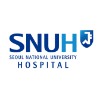
A Comparison of the Effects of Ketamine and Remifentanil on Serum Cystatin-c Levels in CABG Surgery...
Coronary Artery DiseaseIn this prospective, randomized, clinical trial, we have investigated the effects of ketamine-based and remifentanil-based anesthetic protocol on perioperative serum cystatin-c levels, and creatinine and/or cystatin-c based eGFR equations in terms of acute kidney injury in CABG surgery.This study was approved by the Ethics Committee of Hospital and all patients were informed and gave written consent. Patients scheduled for elective CABG with cardiopulmonary bypass. Patients were randomly allocated to anesthesia with remifentanil-propofol-midazolam (RPM) group or ketamine-propofol-midazolam (KPM) group. Blood samples were obtained before induction of anesthesia (baseline), at the end of the operation, and postoperative days 1, 2, and 4.

A Study on Improved Dynamic Myocardial Perfusion With Less Effective Radiation Dose in CT (SIMPLE...
Myocardial IschemiaAmong the current myocardial CT perfusion techniques, dynamic CT perfusion technique is most advantageous in obtaining information on myocardial blood flow and volume. However, dynamic CT perfusion technique involves higher radiation dose than static CT techniques. Patients have to take a breath hold during 30 seconds with current dynamic CT perfusion protocol. If patients cannot hold their breath, anterior or inferior myocardium might be excluded due to limited scan coverage of a 128-slice dual-source CT scanner. Reduction of scanning duration of dynamic CT perfusion may not only reduce radiation exposure, but also make patients more comfortable. Therefore, the investigators intended to propose a modified scan protocol with shorter scan duration and compare diagnostic accuracy of a modified scan protocol with the current scan protocol.

Study of the Effect of omega3 on Biomarkers of Cardiac Necrosis (CKMB and Troponin I) and Inflammation...
Coronary ArteriosclerosisThe purpose of this study is to investigate the effect of omega 3 on biomarkers of cardiac necrosis(CKMB and troponin I) and inflammation marker CRP.

The Real-world Firebird 2 Versus Cypher Sirolimus-eluting Stent in Treating Patients With Coronary...
Coronary Artery StenosisSirolimus-eluting stent (SES) has been world-widely used in clinical practice in treating patients with coronary artery disease (CAD). The efficacy and safety of Cypher SES (Cordis, MA) has been proved by several randomized clinical trials. Here the investigators design a prospective, multicenter, randomized clinical study in purpose of identifying the non-inferiority in the efficacy and safety in treating CAD patients by Firebird 2 SES (Microport, Shanghai), comparing with Cypher SES.

A Study on the Effects of Ranolazine on Exercise Duration in Subjects With Chronic Stable Angina...
Angina PectorisCoronary Artery Disease1 moreThis study will evaluate the efficacy of ranolazine compared to placebo on duration of exercise assessed by exercise tolerance testing (ETT) at anticipated peak ranolazine plasma concentration after 12 weeks of treatment in subjects with chronic stable angina and coronary artery disease (CAD) who have a history of type 2 diabetes mellitus (T2DM).

Tailored Communication to Reduce Cardiovascular Risk
HypercholesterolemiaCoronary Artery Disease2 moreThe primary goal of the trial is to test the feasibility and efficacy of a cardiovascular disease quality improvement system that couples EMR-based patient identification with individually tailored patient messages. The study will test the hypothesis that that a tailored patient-directed approach to cardiovascular risk reduction integrated into patients' primary care delivery site will improve control of elevated low-density lipoprotein cholesterol and other card iac risk factors more than routine care alone for patients at intermediate or high risk for cardiovascular disease.

IMAGE-HF Project I-A: Cardiac Imaging in Ischemic Heart Failure (AIMI-HF)
Heart FailureCoronary Artery Disease1 moreMedical imaging is one of the fastest growing sectors in health care and increases in utilization underscore the need to ensure imaging technology is developed and used effectively. Evaluation of the clinical and economic impact of such imaging lags behind the technology development. Heart failure (HF) represents the final common pathway for most forms of heart disease and morbidity and mortality remain high. There is a need to identify imaging approaches that have a positive impact on therapy decisions, patient outcomes and costs. As well as standard methods to evaluate new and emerging techniques to better test their potential in a clinical management setting. PRIMARY OBJECTIVES: to compare the effect of HF imaging strategies on the composite clinical endpoint of cardiac death, MI, resuscitated cardiac arrest and cardiac re-hospitalization (WHF, ACS, arrhythmia). Patients with an ischemic heart disease (IHD) etiology will follow HF imaging strategy algorithms according to the question(s) asked by the physicians (is there ischemia and/or viability), in agreement with their local practices for standard and alternative imaging. SECONDARY OBJECTIVES: To evaluate the effect of imaging modalities within and between the imaging subgroups (advanced (CMR and PET), PET, MRI and standard (SPECT)) on the primary and secondary outcomes in patients being evaluated either for viability and/or ischemia. To evaluate the impact of adherence to recommendations between modalities on outcomes in patients being evaluated for either viability or ischemia. To compare the effect of HF imaging strategies on: The incidence of revascularization procedures (PCI, CABG, none) and the interaction of the imaging strategy and types of revascularization on outcomes LV remodeling: LV volumes, LVEF, HF symptoms, NYHA class QOL (MLHFQ, the EQ5D) The evolution of serum prognostic markers in HF (e.g. BNP, RDW, hs-cTnT, hs-CRP, ST2) Health economics: Costs estimated through regression analysis and cost effectiveness assessed through decision modeling. The safety of imaging tests measured by cumulative radiation, adverse reactions to imaging contrast agents and stress testing agents will also be determined. The evolution of renal function (eGFR) and LV remodeling-associated biomarkers (e.g. PIIINP, OPN). Event rates of each component of the composite endpoint as well as the combined endpoint of CV death and HF hospitalization All-cause mortality

Clinical Evaluation of Magnetic Resonance Imaging in Coronary Heart Disease-2
Coronary Heart DiseaseCE-MARC 2 is a randomised controlled trial to determine diagnosis and patient management in patients presenting to outpatient clinics with suspected stable angina. Cardiac Magnetic Resonance Imaging (at 3Tesla) will be evaluated prospectively against current best clinical practice (defined by international guidelines). The study hypothesis is that 3Tesla CMR-guided management of patients with suspected stable angina is superior to current clinical practice based on 1) the principles of the National Institutes for Clinical Excellence (NICE) CG95 guidelines (2010); 2) SPECT AHA appropriateness criteria, in terms of avoiding study-defined unnecessary invasive coronary angiography.

Passive Leg Raising Test to Predict Hypotension During Induction of Anesthesia in Patients Undergoing...
Ischemic Heart DiseaseCardiac Valve DiseaseHypotension frequently occurs during anesthesia induction. Preload decrease by anesthetics was often considered as one of main causes for this hypotension. However, the studies on this topic have been lacking. Dynamic preload indices are more suitable than static preload indices to predict the effect of preload changes. And, recently, passive leg raising test showed successful results to predict fluid responsiveness in patient with spontaneous ventilation. The investigators hypothesized that hypotension after induction of anesthesia is caused by decrease of preload by anesthetics and passive leg raising test could predict this hypotension. In this study, the investigators will try to evaluate whether passive leg raising induced hemodynamic changes could predict hypotension during anesthesia induction.

Dual Antiplatelet Therapy in Patients With Aspirin Resistance Following Coronary Artery Bypass Grafting...
Coronary Artery DiseaseAspirin ResistanceReactive platelet hyperactivity following coronary artery bypass grafting (CABG) might lead to thrombotic complications and major ischemic cardiac events. The aim of this study is to evaluate the changes in platelet reactivity following CABG and to clarify a potentially beneficial effect of dual antiplatelet therapy in the group of patients with documented aspirin resistance following CABG. Platelet function will be assessed by multiple electrode aggregometry. Aortocoronary vein graft disease is comprised of three distinct but interrelated pathological processes: thrombosis, intimal hyperplasia and atherosclerosis. Early vein thrombosis is a major cause of vein graft attrition during the first month after CABG. Bypass patency can be improved with antiplatelet therapy which is the mainstay of treatment for patients after CABG. A beneficial effect of acetylsalicylic acid (ASA) on vein graft patency has been previously shown. Some patients experience thrombotic events despite continuous aspirin administration after CABG. The investigators hypothesized that low responsiveness to aspirin might be a precipitating factor for adverse thrombotic events following CABG. Low responsiveness to ASA, as assessed by platelet function tests, varies widely among patients. The etiology of postoperative platelet hyperactivity remains to be elucidated. In this study a new point-of-care assay named multiple electrode aggregometry (MEA) using a device called Multiplate analyzer (Dynabyte, Munich, Germany) has been utilized. It allows for rapid and standardized assessment of platelet function parameters. This is a prospective randomized trial. The aim of the study is to document whether introduction of dual antiplatelet therapy in patients with ASA resistance will lead to a lower incidence of major adverse cardiac events (MACE) at a six month follow up. The composite endpoint will include death, non-fatal myocardial infarction, stroke and cardiac rehospitalization. All patients will receive 300 mg of ASA starting 6 hours after surgery, provided that the chest tube output is minimal. On postoperative day 4 their platelet function will be assessed using the above mentioned MEA. The patients found to be aspirin resistant will then undergo the process of randomization. The first arm will include patients with ASA resistance in whom no additional antiaggregation will be administered. In the second arm the investigators will include patients who were randomized to receive 75 mg of clopidogrel in addition to the standard antiplatelet regimen of 300 mg of ASA. Platelet function monitoring allows for individual tailoring of the antiplatelet therapy. The goal of this study is to define whether this strategy will lead to improved patient outcomes. Both major and minor bleeding complications will be strictly monitored and reported.
